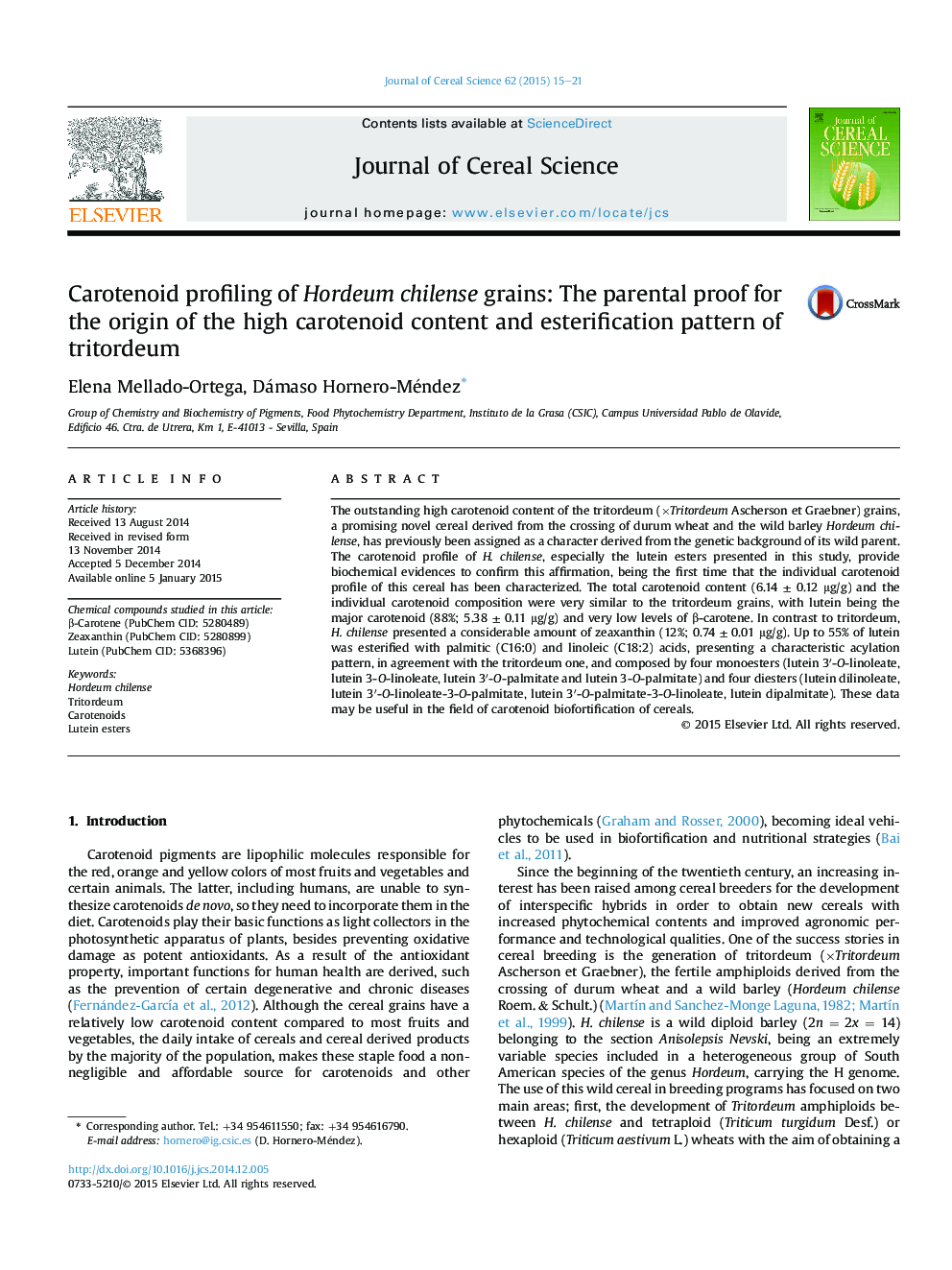| کد مقاله | کد نشریه | سال انتشار | مقاله انگلیسی | نسخه تمام متن |
|---|---|---|---|---|
| 4515718 | 1624900 | 2015 | 7 صفحه PDF | دانلود رایگان |

• Carotenoid profile of Hordeum chilense grains has been analysed for the first time.
• Lutein is the major carotenoid pigment in H. chilense grains.
• The esterification pattern of lutein in H. chilense and tritordeum is identical.
• H. chilense genetic background provides the higher carotenoid content to tritordeum.
The outstanding high carotenoid content of the tritordeum (×Tritordeum Ascherson et Graebner) grains, a promising novel cereal derived from the crossing of durum wheat and the wild barley Hordeum chilense, has previously been assigned as a character derived from the genetic background of its wild parent. The carotenoid profile of H. chilense, especially the lutein esters presented in this study, provide biochemical evidences to confirm this affirmation, being the first time that the individual carotenoid profile of this cereal has been characterized. The total carotenoid content (6.14 ± 0.12 μg/g) and the individual carotenoid composition were very similar to the tritordeum grains, with lutein being the major carotenoid (88%; 5.38 ± 0.11 μg/g) and very low levels of β-carotene. In contrast to tritordeum, H. chilense presented a considerable amount of zeaxanthin (12%; 0.74 ± 0.01 μg/g). Up to 55% of lutein was esterified with palmitic (C16:0) and linoleic (C18:2) acids, presenting a characteristic acylation pattern, in agreement with the tritordeum one, and composed by four monoesters (lutein 3′-O-linoleate, lutein 3-O-linoleate, lutein 3′-O-palmitate and lutein 3-O-palmitate) and four diesters (lutein dilinoleate, lutein 3′-O-linoleate-3-O-palmitate, lutein 3′-O-palmitate-3-O-linoleate, lutein dipalmitate). These data may be useful in the field of carotenoid biofortification of cereals.
Journal: Journal of Cereal Science - Volume 62, March 2015, Pages 15–21